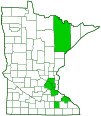fruit fly
(Eutreta novaeboracensis)
Conservation • Description • Habitat • Ecology • Distribution • Taxonomy
|
|
||||||||||||||
Description |
Eutreta novaeboracensis is a common fruit fly. It occurs in the United States from Maine to North Carolina, west to Minnesota and Missouri, and in southern Canada from Nova Scotia west to Ontario. iNaturalist has several unconfirmed observations further south, from South Carolina to Texas, some of which appear to be misidentifications of Eutreta caliptera. Adults are active mostly in July and August in Minnesota, from June to October in other areas. They are found in weedy areas along streams and in the openings of forests and woodlands. Adults can usually be found in stands of tall goldenrod. The larvae attack underground stems (rhizomes) of tall goldenrod (Solidago altissima) and occasionally other goldenrods. Adults are about 5⁄16″ (8.9 mm) in length. That is medium sized for a fly, large for a fruit fly. The body is brown, often slightly reddish brown to yellowish brown The upper part of the front of the head (frons) is nearly flat, not distinctly concave or bulging. It is at least as wide at the top as the eye, and the lateral margins are nearly parallel. The face is pale with a pair of large, dark brown to black, round or bar-shaped spots. The spot at the base of the antennae (orbital-antennal spot) is large and dark brown. The placement and description of various bristles on the head and body are important taxonomic characters used to distinguish between different fly species and genera. There is a pair of prominent bristles (vertical bristles) near the top of the head (vertex). The inner vertical bristle is yellowish brown to black. The outer vertical bristle is short, inflated, and pale yellow. There are three lower and two upper sensory bristles along the frontal and upper orbits (the margins of the compound eyes). The lower frontal orbital bristles are yellowish brown to black. The first (anterior) upper frontal orbital bristle is yellowish brown to black. The second (posterior) frontal orbital bristle is pale yellow. The thorax is yellowish brown. The bristle in the shoulder area (humeral bristle) and the pair of bristles near the midline of the scutum (prescutellar acrostical bristles) are both present. The plate between the abdomen and thorax (scutellum) is not shiny and it is not bulging. It has two pairs of bristles. The wings are twice as long as wide. They are dark brown with many small, pale, translucent (hyaline) spots; a crescent-shaped, hyaline border around the rear margin; and a hyaline area near the middle of the leading edge (costal margin). All of the spots are distinct, none of them merging and forming a pale band. The hyaline crescent is wide, and it is not interrupted along the veins. Before the hyaline crescent there is a dark brown band with no pale spots. The dark band is as wide as the hyaline crescent. The hyaline costal area is narrow and short. It does not extend beyond the first branch of the radius vein (R1), and it usually extends wedge-like into the R1 cell. Aside from the hyaline costal area, there are no spots along the costal margin. The lower corner of the anal cell is elongated. The tip of the anal cell is closed. |
Size |
Total length: about 5⁄16″ (8.9 mm) |
Similar Species |
Habitat and Hosts |
Streamsides, openings of forests and woodlands, Tall goldenrod (Solidago altissima) and occasionally other goldenrods (Solidago spp.). |
Ecology |
Season |
One or two generations per year: Late June to October (CCESR), mostly July and August (iNaturalist, BugGuide) |
Behavior |
|
Life Cycle |
|
Larva Food |
|
Adult Food |
|
Distribution |
||
|
Sources |
|
| 4/16/2025 | ||
Occurrence |
||
|
||
Taxonomy |
|
Order |
|
Suborder |
Brachycera |
Infraorder |
Cyclorrhapha |
Zoosection |
Schizophora |
Zoosubsection |
Acalyptratae |
Superfamily |
Tephritoidea (fruit, signal, and picture-winged flies) |
Family |
Tephritidae (fruit flies) |
Subfamily |
Tephritinae |
Tribe |
Eutretini |
Genus |
Eutreta |
Subgenus |
Eutreta |
In 2018, iNaturalist changed the scientific name of this species from Eutreta novaeboracensis to Eutreta noveboracensis. No explanation for the change is provided beyond a broken link to BugGuide.net. All other taxonomy sources use the name Eutreta novaeboracensis. |
|
Subordinate Taxa |
|
|
|
Synonyms |
|
Acinia novaeboracensis Eutreta noveboracensis Trypeta cribripennis |
|
Common Names |
|
This species has no common name. The common name for the family Tephritidae is fruit flies, and it is applied here for convenience. |
|
Glossary
Costal margin
The leading edge of the forewing of insects.
Frons
The upper front part of an insect’s face, roughly corresponding to the forehead.
Scutellum
The exoskeletal plate covering the rearward (posterior) part of the middle segment of the thorax in some insects. In Coleoptera, Hemiptera, and Homoptera, the dorsal, often triangular plate behind the pronotum and between the bases of the front wings. In Diptera, the exoskeletal plate between the abdomen and the thorax.
Scutum
The forward (anterior) portion of the middle segment of the thorax (mesonotum) in insects and some arachnids.
Vertex
The upper surface of an insect’s head.
Visitor Photos |
||
Share your photo of this insect. |
||
This button not working for you? |
||
Alfredo Colon |
||
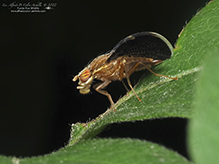 |
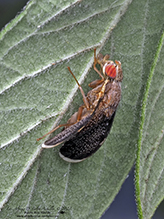 |
|
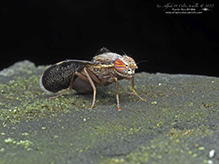 |
 |
|
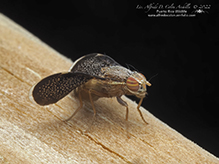 |
 |
|
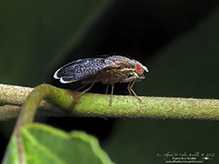 |
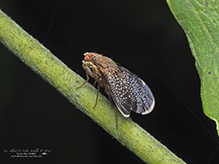 |
|
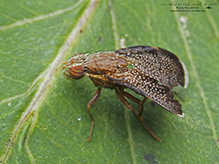 |
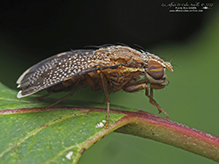 |
|
MinnesotaSeasons.com Photos |
||
|
||
|
||

Slideshows |
|

Visitor Videos |
||
Share your video of this insect. |
||
This button not working for you? |
||
|
Other Videos |
||
|

Visitor Sightings |
||
Report a sighting of this insect. |
||
This button not working for you? |
||
Alfredo Colon |
Location: Albany, NY |
 |
Alfredo Colon |
Location: Albany, NY |
 |
Alfredo Colon |
Location: Albany, NY |
 |
Alfredo Colon |
Location: Albany, NY |
 |
Alfredo Colon |
Location: Albany, NY |
 |
Alfredo Colon |
Location: Albany, NY |
 |
Alfredo Colon |
Location: Albany, NY |
 |
MinnesotaSeasons.com Sightings |
||
|

|
Created: 4/17/2025 Last Updated: © MinnesotaSeasons.com. All rights reserved. |
